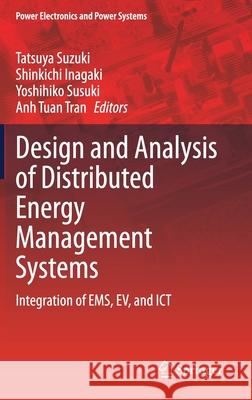Design and Analysis of Distributed Energy Management Systems: Integration of Ems, Ev, and Ict » książka
topmenu
Design and Analysis of Distributed Energy Management Systems: Integration of Ems, Ev, and Ict
ISBN-13: 9783030336714 / Angielski / Twarda / 2020 / 205 str.
Design and Analysis of Distributed Energy Management Systems: Integration of Ems, Ev, and Ict
ISBN-13: 9783030336714 / Angielski / Twarda / 2020 / 205 str.
cena 605,23
(netto: 576,41 VAT: 5%)
Najniższa cena z 30 dni: 578,30
(netto: 576,41 VAT: 5%)
Najniższa cena z 30 dni: 578,30
Termin realizacji zamówienia:
ok. 22 dni roboczych.
ok. 22 dni roboczych.
Darmowa dostawa!
Kategorie:
Kategorie BISAC:
Wydawca:
Springer
Seria wydawnicza:
Język:
Angielski
ISBN-13:
9783030336714
Rok wydania:
2020
Wydanie:
2020
Numer serii:
000045406
Ilość stron:
205
Waga:
0.48 kg
Wymiary:
23.39 x 15.6 x 1.42
Oprawa:
Twarda
Wolumenów:
01
Dodatkowe informacje:
Wydanie ilustrowane











